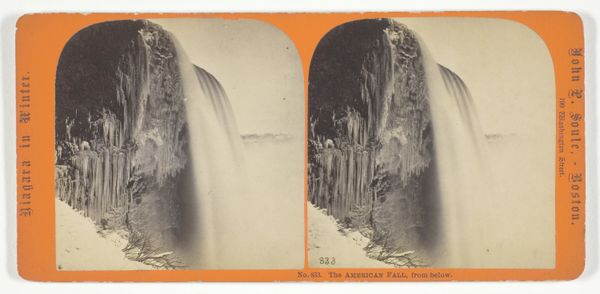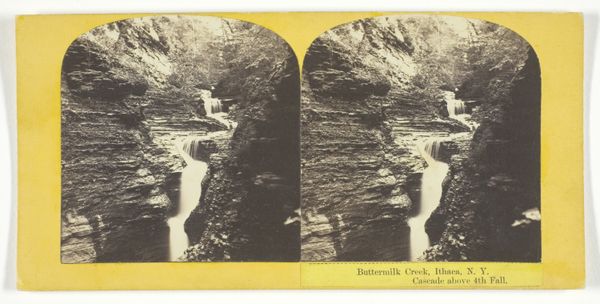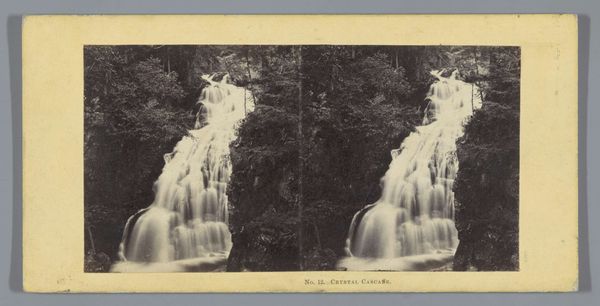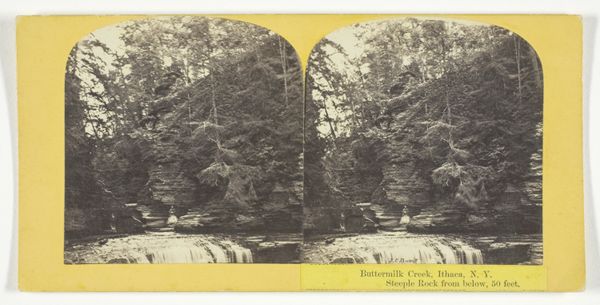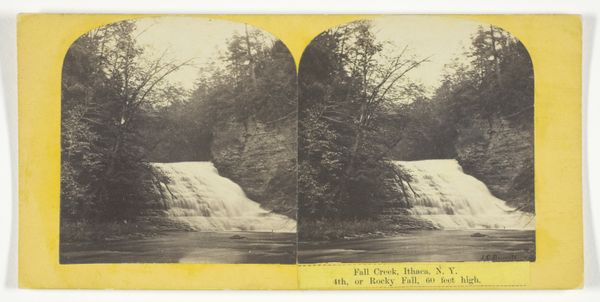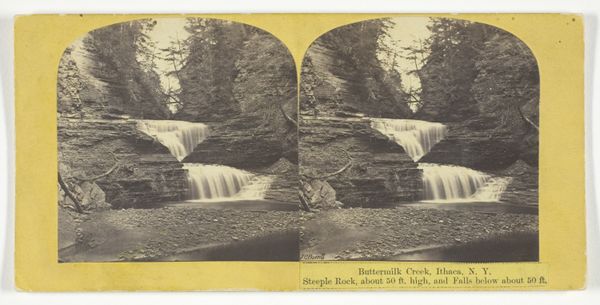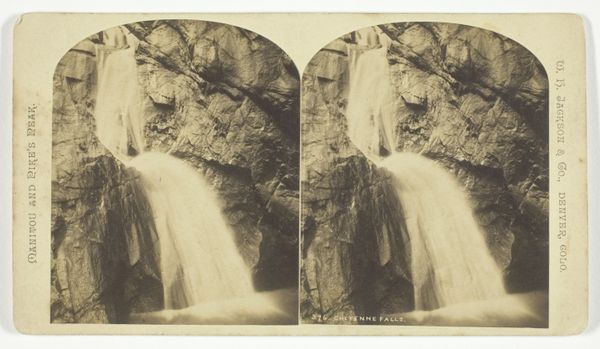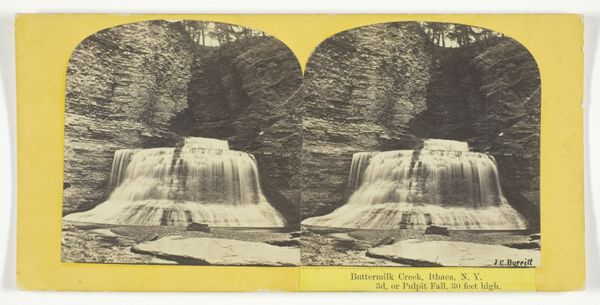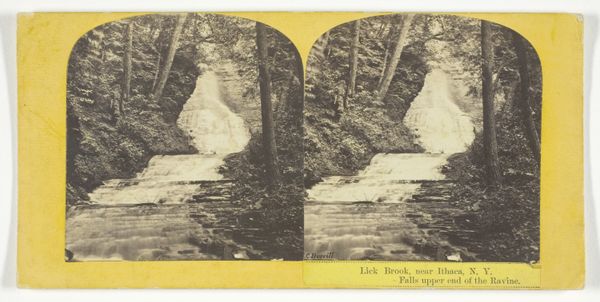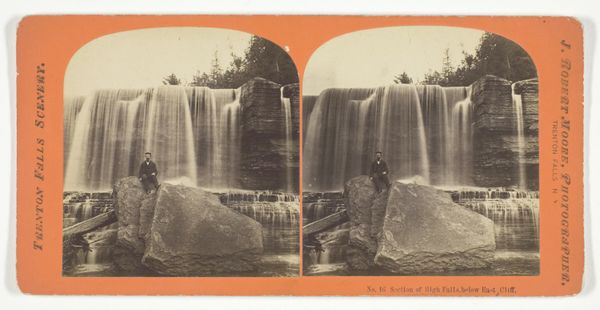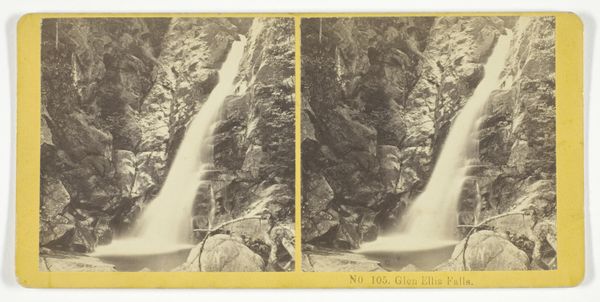
Cascadilla Creek, Ithaca, N.Y. 6th Fall, or Giant's Staircase, near Willow Pond 1860 - 1865
0:00
0:00
silver, print, photography, gelatin-silver-print
#
silver
# print
#
landscape
#
photography
#
gelatin-silver-print
#
hudson-river-school
Dimensions: 7.5 × 7.2 cm (each image); 8.4 × 17.1 cm (card)
Copyright: Public Domain
Curator: Looking at this gelatin silver print, titled "Cascadilla Creek, Ithaca, N.Y. 6th Fall, or Giant's Staircase, near Willow Pond" by J.C. Burritt and created sometime between 1860 and 1865, I am struck by its evocation of natural majesty. Editor: It's lovely. The cascading water looks so soft in contrast to the dark rocks. There's a strange peace despite the power of the water, and the materiality of gelatin silver emphasizes the textural contrast between water and rock so well. Curator: It certainly fits within the aesthetic of the Hudson River School, wouldn't you agree? We see that emphasis on capturing the sublime beauty of the American landscape that was prevalent at that time, but using photography rather than paint. Editor: Absolutely, but what's fascinating to me is the photographic *process* here. The gelatin silver print speaks to a mass production meant for distribution. Not a one-of-a-kind landscape painting for the wealthy, but something almost anyone could own, which shifts how nature is consumed and possessed. The small human figure shows scale and possession by contrast. Curator: A valid point. These stereoscopic images, intended for viewing in a special device to create a three-dimensional effect, became quite popular for bringing faraway places into people’s homes. How does this form influence the accessibility of experiencing landscapes and their documentation as commodity? Editor: Exactly! Photography, through this mass reproducibility, changes our relationship to landscape. It turns nature into a commodity, readily available for visual consumption. Plus, who has access to this commodity, versus an actual vacation, speaks volumes. Curator: This work demonstrates the role photography played in shaping perceptions of the natural world for a rapidly changing society. Thanks for reminding me to think beyond artistic movements. Editor: My pleasure. It's always rewarding to consider not just what's depicted, but how its circulation affected the era's economy.
Comments
No comments
Be the first to comment and join the conversation on the ultimate creative platform.
